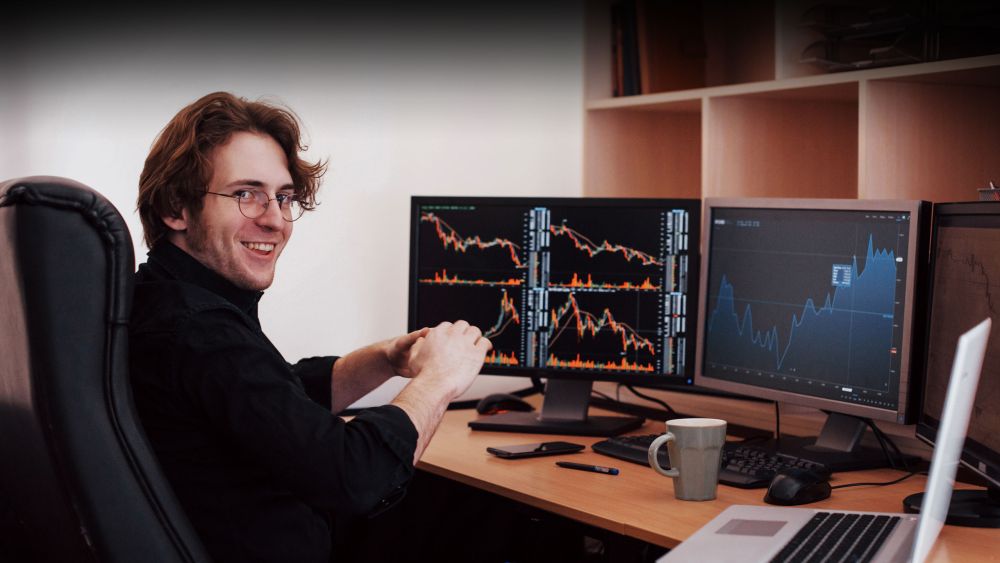Today, brokerages are fiercely competing for your money.
In 2013, Robinhood shook up the brokerage game by offering $0 commissions on every trade. Finally, we were all free to buy shares of Hertz after bankruptcy or pump-and-dump GameStop to our heart’s content. But there’s no such thing as a free lunch – or trade.
Obviously Robinhood has to make money somehow, and they do so by selling orders to a market maker, namely Citadel Securities, who effectively sets the bid/ask spread on every trade and receives part difference as payment for ensuring that trades can go through.
The point is, free trades are everywhere now.
Other brokers followed suit: E-Trade, SoFi, Interactive Brokers, Webull, TD Ameritrade, Charles Schwab – need we go on? With so many brokers offering free trades, the race to the bottom in terms of fees now over. (Though, it’s technically possible that a brokerage could pay you to trade, but that’s an SEC violation waiting to happen.) Brokerages now compete largely through value-added services, many of which are essential learning tools for new traders.
Education: TD Ameritrade will literally hold your hand, showing you how to trade stocks on their platform, in person at their offices. Plenty of other brokers, even Robinhood, feature some kind of explanation, graphics or articles to explain the basics. If finance blogs aren’t cutting it – we’re doing the best we can, we swear – then these resources can be a huge help.
ETFs: Most investors are just looking for somewhere safe to park their money long term. Thus, the rise of mutual funds, indexes, and most recently, ETFs. Exchange Traded Funds (ETFs) allow investors to purchase a single security that comprises several individual companies or assets.
For many investors, they’re the perfect balance between the ultra-conservative wide net of an index and the stress-inducing volatility of an individual stock. Interactive Brokers and Charles Schwab have designed tools to make this approach even easier, allowing you to compare and analyze ETFs in countless industries and verticals.
How to choose a broker? What if you want to keep your options open?
Let’s preface by stating that we neither condone nor encourage reckless option trading. It’s often a last-ditch effort when a trader’s all out of options. (Sorry, couldn’t resist.) We even wrote a whole blog about how easy it is for things to go wrong trading options. But if you still want to defy all evidence and logic to take a swing, there are plenty of online brokerages with nifty option platforms to help. Here’s what to watch out for:
Fees: Keep in mind that while a brokerage may offer commission-free trading, they’ll often charge a fee for option trades. For example, Ally Invest is commission free, but charges $.50 per contract. E-Trade charges $0.50–0.65. Bear in mind that since each contract is for 100 shares, this fee should be negligible for most trades.
UX: Is the platform user-friendly, with information displayed coherently? It’s surprisingly easy to misread and misunderstand an option grid when all the data is presented at once. Good brokers will make it clear what’s in the money and out, as well as directing your attention to open interest, greeks and other critical stats.
Speed: This can vary wildly even on a single platform, so brokers are often hesitant to present specific speed claims. But if your strategy includes quickly entering and exiting positions, it’s worth your time as a trader to look into how fast a website can respond and fulfill orders. A complicated interface requiring lots of clicks can slow this down as well.
Once you’ve decided how to choose a broker, you’ll be on your way to developing a trading strategy of your own. Whether you’re trading futures, forex, options, ETFs or all of the above, fractalerts can be a critical part of that strategy. Every 1–2 weeks, we send you trade alerts based on our proprietary mathematical models 24–48 hours before we make the very same trade.
To find the right fractalerts for your trading strategy tell us about what you trade on our Get Started page.
-

Consistency Isn’t the Goal—It’s the Outcome
-

What 2 Quadrillion Data Points Told Us
-

Math and Physics-Based Trading in Any Market Condition
-

Do not worry about anomalies
-

Consistency should not be the goal. Consistency should be the result.
-

Stop canceling fridays
-

The Elliott Wave Forecast is Subjective, Bias Driven And Backwards looking
-

Finding patterns in market data
-

Taking profits through the trade timeline
-

What is your win ratio and you really want to know?

